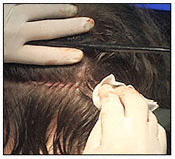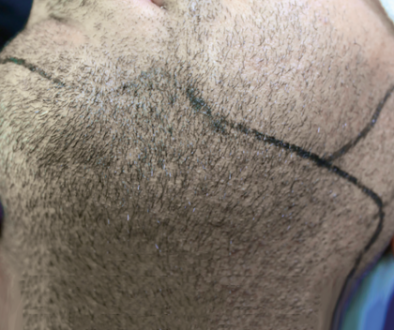Will Harvesting a Shorter, Wider Strip in Hair Transplant Surgery Cause Less Scarring?
This question comes from a member of our Hair Restoration Social Community and Discussion Forums:
I’m looking to undergo a smaller follicular unit transplantation (FUT) procedure with minimal scarring. Specifically, I’d like to eliminate the risk of scarring on the sides of the universal donor region by taking a smaller, wider strip strictly from the back of my scalp. Will a smaller, wider follicular unit hair transplant allow for a decent number of grafts while also reducing potential scarring?
 Technically, as long as the strip incision is made within the universal safe extraction zone, follicles can be effectively removed from the area. However, it’s very likely that a shorter, wider strip (which would still result in a significant number of follicular units when compared to a longer, thinner strip) would actually create more scarring in general.
Technically, as long as the strip incision is made within the universal safe extraction zone, follicles can be effectively removed from the area. However, it’s very likely that a shorter, wider strip (which would still result in a significant number of follicular units when compared to a longer, thinner strip) would actually create more scarring in general.
In theory, if a hair transplant surgeon is trying to extract and implant a certain number of grafts, he/she can do so by either taking a shorter, wider strip or a longer, thinner strip. If the hair restoration surgeon took the shorter, thicker strip, you would save any potential scarring from the sides of the head, but the closure would involve more tension (because the width of the strip is wider and harder to properly close) than compared to a longer strip that is much thinner. Tension is the enemy of the hair transplant scarring process, and you’re going to experience more tension closing a short, wide wound when compared to a long, thin wound.
_______________
Blake Bloxham – formerly “Future_HT_Doc”
Editorial Assistant and Forum Co-Moderator for the Hair Transplant Network, the Hair Loss Learning Center, the Hair Loss Q&A Blog, and the Hair Restoration Forum
Follow our community on Twitter
Watch hair transplant videos on YouTube
Technorati Tags: Hair Restoration, follicular unit transplantation, FUT, follicular unit, hair transplant, follicular units, hair transplant surgeon



